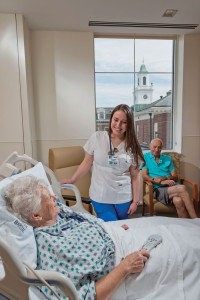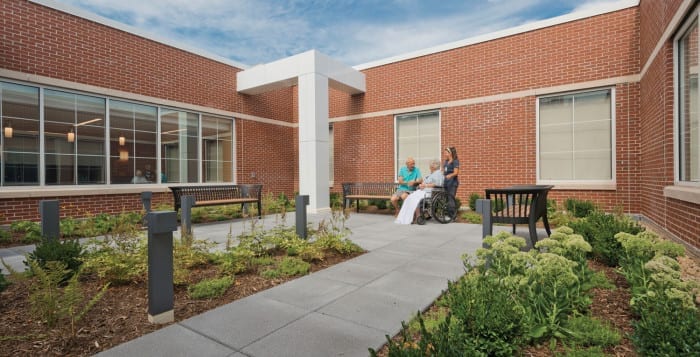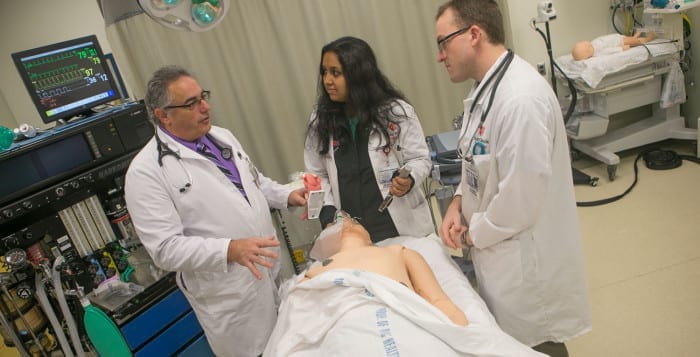New facilities at John T. Mather Memorial Hospital aim to reduce infection rates and bring more doctors to the area.
The Port Jefferson hospital recently dedicated its new Arthur & Linda Calace Foundation Pavilion, adding more than 28,400 square feet of space to the north side of the hospital that is being used to house patient rooms as well as medical offices and conference rooms.
According to Mather spokesman Stuart Vincent, there are 35 one-bed rooms in the new pavilion. Rather than using the space to add to the hospital’s 248 beds, beds were moved from existing double rooms into the new pavilion, creating 70 new single-bed patient rooms throughout the hospital.

Taking away those 35 double rooms and adding the 70 single rooms means “for the first time, the majority of rooms at Mather are now single-bedded, which aids in both patient healing and in reducing the risk of infection spreading among patients,” Vincent said in an email.
The patient rooms in the new pavilion will be used for intermediate care and will each have their own medication cabinet and a computer for managing patient information, according to Vincent. The unit also keeps nurses close to patients, with nursing stations throughout the floor.
Joseph Wisnoski, CFO at Mather, said in a previous statement, “A single-bed patient room is no longer a luxury, but the standard for hospitals across the nation.”
That patient unit is located above two floors of new offices and conference rooms and a 180-seat conference center. When the hospital broke ground on the expansion project two years ago, officials said the office space would be used to combat a shortage of primary care physicians by training more of those professionals — who would then hopefully stay in the area — in a graduate education program that includes seminars and symposia.
The pavilion is Mather’s first expansion in more than a decade, and Vincent said it is the sixth expansion since the hospital opened in 1929. It was named for Arthur and Linda Calace, the primary donors on the project, who raised their family nearby and wanted to give back to the community. The Calaces and other donors combined to cover $5 million of the total construction cost.






